 When it comes to the types of vein disease that have an aesthetic impact on your appearance, the two biggest offenders are varicose veins and spider veins. Both of these unsightly conditions can cause equal amounts of damage to your self-esteem, but they are not the same. There are important differences between these two types of vein disease, including the impact they may have on your overall health.
When it comes to the types of vein disease that have an aesthetic impact on your appearance, the two biggest offenders are varicose veins and spider veins. Both of these unsightly conditions can cause equal amounts of damage to your self-esteem, but they are not the same. There are important differences between these two types of vein disease, including the impact they may have on your overall health.
In this article, Dr. Jeff Braxton and Dr. David Lopresti, two of the best Sun City vein doctors on our staff at Comprehensive Integrated Care, help you understand the differences between these two conditions. This will help you to make the best decisions possible on how to seek the best vein disease treatment near you.
One of the first things to look for to tell the difference between varicose veins and spider veins is the size of the vein
Spider veins tend to be very small and fine, less than 1 millimeter in diameter. They may, in fact, be so small that they are difficult to see when they first appear. They stretch for only a few inches before branching off. They are typically red or purple in color, and typically do not protrude above the surface of the skin.
Varicose veins, on the other hand, are much larger, both in terms of length and width. They are typically 4 to 5 millimeters in diameter, blue in color, and they tend to protrude above the surface of the skin.
Additional things to consider are how the veins are shaped, and where they are located
Spider veins form branching patterns that look similar to a spider web or the roots of a tree. They tend to clump together in web-like clusters (thus the name), but sometimes form “nests” that resemble a bruise. Spider veins usually form on the legs, especially behind the knee. However, they also may appear on the neck, face, ankles, and other areas of the body.
Varicose veins do not form webs or clumps, but they do typically bulge out of the skin in twisted, ropy patterns. They primarily appear on the legs, ankles, and feet. When these bulging veins first appear, they feel soft to the touch. As the disease progresses they may become hard and tender.
Spider veins and varicose veins are both types of vein disease
Both of these conditions are caused by the reflux (backwards) flow of blood through the veins. Both are symptoms of chronic venous insufficiency (CVI). CVI causes the tiny, one-way valves in the veins to malfunction, fail to close properly, and become “leaky.” When this happens, blood flows back into the veins and pools there, causing them to swell.
There are also differences in how spider veins and varicose veins affect your overall health
In most cases, spider veins are considered simply an aesthetic problem, and pose few health risks. While their unsightly appearance may cause self-consciousness, they do not have a major impact on your overall level of health.
Varicose veins, on the other hand, are often associated with more serious problems. Left untreated, they are more likely to cause symptoms such as pain, chronic weakness or tiredness, leg swelling, and changes to the texture of the skin covering them. Some people experience considerable pain as a result of their varicose veins. This pain is often dull and throbbing (as opposed to sharp). It becomes worse if you sit or stand in the same position for long periods. This can result in chronically swollen, achy legs, and can make it extremely difficult to walk or exercise.
If left untreated, varicose veins can progress to advanced stages with even more serious symptoms. Blood pooling in the veins can lead to thinning, color change, and texture change of the skin. This can lead to changes in skin color and texture. In extreme cases, it might result in bleeding leg ulcers. Sluggish blood flow can also raise your risk for blood clots, including the potentially dangerous type of clot known as deep vein thrombosis.
The differences in how varicose veins and spider veins are treated
Naturally, there are differences in varicose vein treatment and spider vein treatment as well. Our Sun City vein doctors treat both conditions in a minimally invasive manner. However, we use the procedures that are most effective at addressing each problem. For example, we often treat small, fine spider veins with sclerotherapy, the injection of a chemical agent that causes the vein walls to seal shut. On the other hand, we may treat larger varicose veins with endovenous laser treatment or radiofrequency ablation. These procedures use heat or high-frequency energy to seal shut larger veins, redirecting blood flow and eliminating pressure.
At Comprehensive Integrated Care, we focus on finding the most appropriate form of treatment for your individual vein problems. Whether you’re suffering from spider veins, varicose veins, or both, we can diagnose and treat the problem.
While these two forms of vein disease are different, they are similar in that both can be treated quickly, easily, and without discomfort. If you’re ready to take the next step in treating your vein disease, get in touch with our Sun City vein clinic at 888-377-7122. Or, go online on this website to schedule an appointment. The best vascular specialists in Arizona are waiting to assist you.
